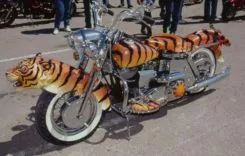Pingel’s H-D Nitrous Express Kit
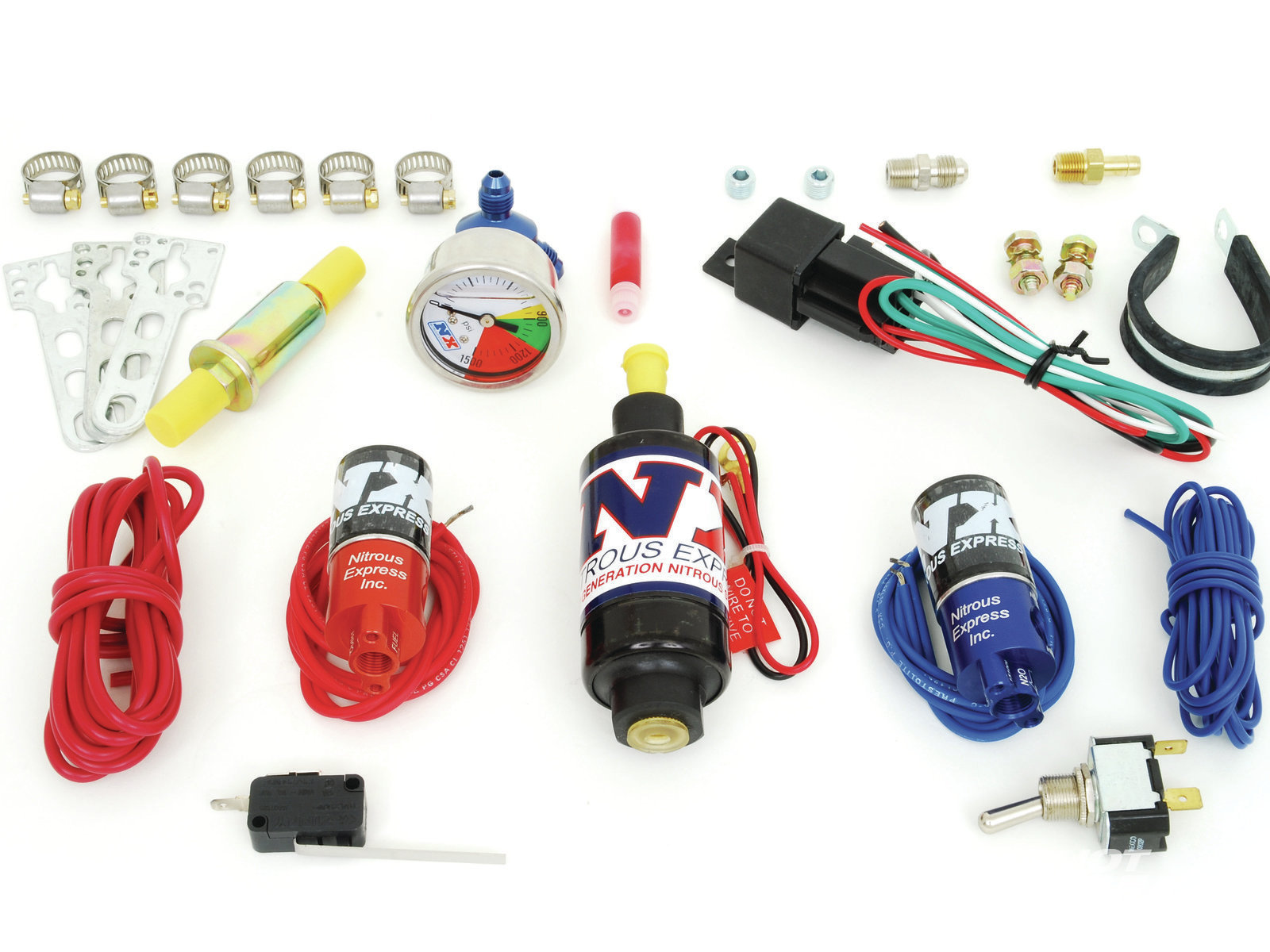

1 The Nitrous Express Universal H-D kit from Pingel includes a plethora of parts for your dollar. Starting from the left side of the photo: an assortment of hose clamps, brackets for the solenoids and wide-open-throttle switch, an in-line fuel filter, a nitrous pressure gauge, a red wire, a red fuel-only solenoid, a wide-open throttle switch, a thread locker tube, an in-line fuel pump, optional hex head screw-in plugs (for solenoids), a 40-amp relay for the solenoids and fuel pump, a bracket for the fuel pump, a blue solenoid for nitrous, a blue wire, and an optional arming toggle switch.
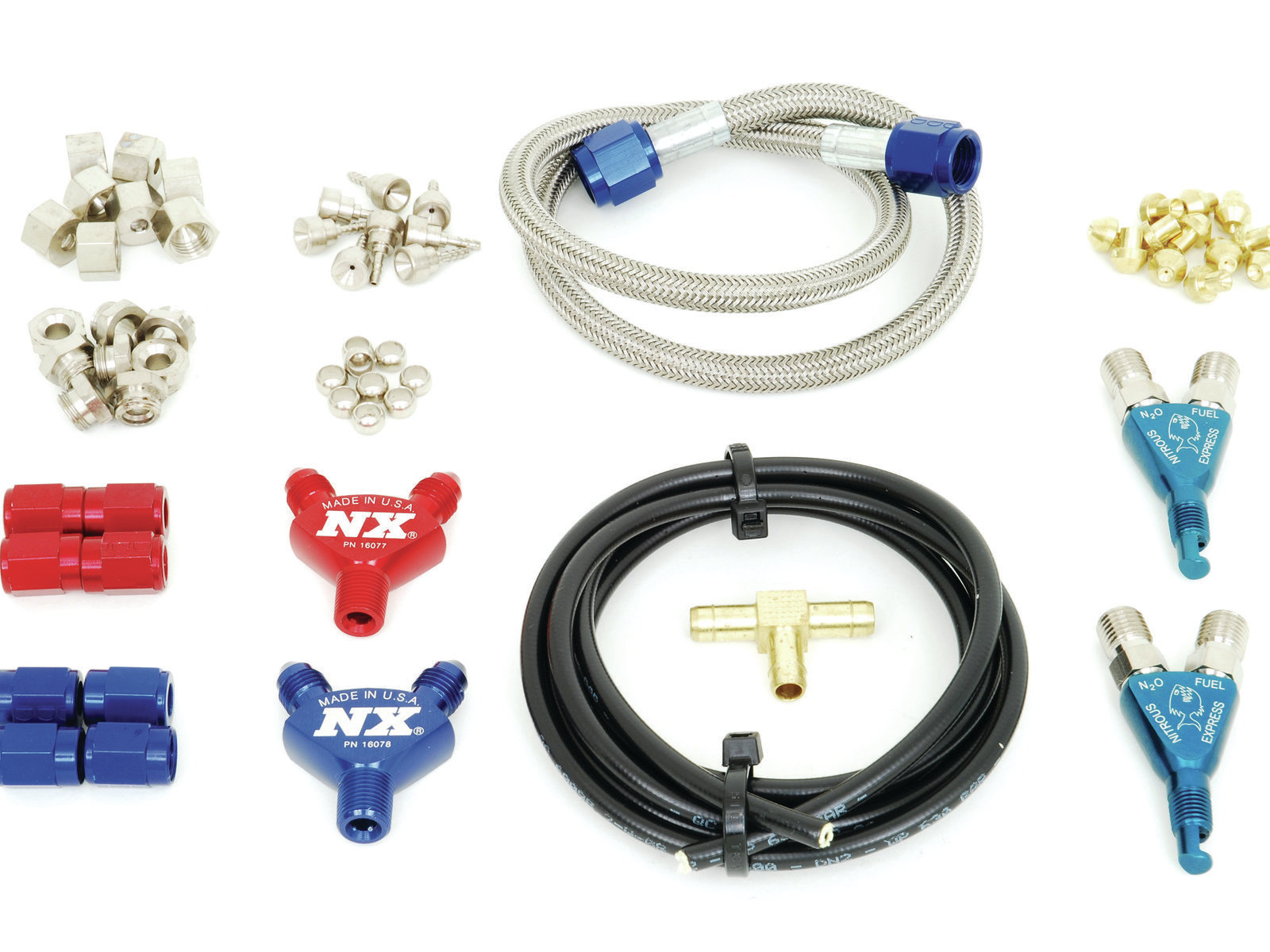
2 Many of the parts in the photo come with the kit, such as the screw-in Piranha intake manifold nozzles, but some of the other parts are upgrades for the dual-bottle kit we’re planning to install. Check out the beautiful A/N fittings color-coded for fuel and nitrous, the steel-braided nitrous line (three for our system), and the assorted fittings and for the 1,500psi poly line. The T-shaped brass fuel fitting is only necessary for systems without Pingel’s dual-outlet fuel valve (see photo #four).

3 Dual show-polished aluminum 10-ounce bottles each with a pair of Pingel’s very own billet 1-1/8-inch downtube brackets.
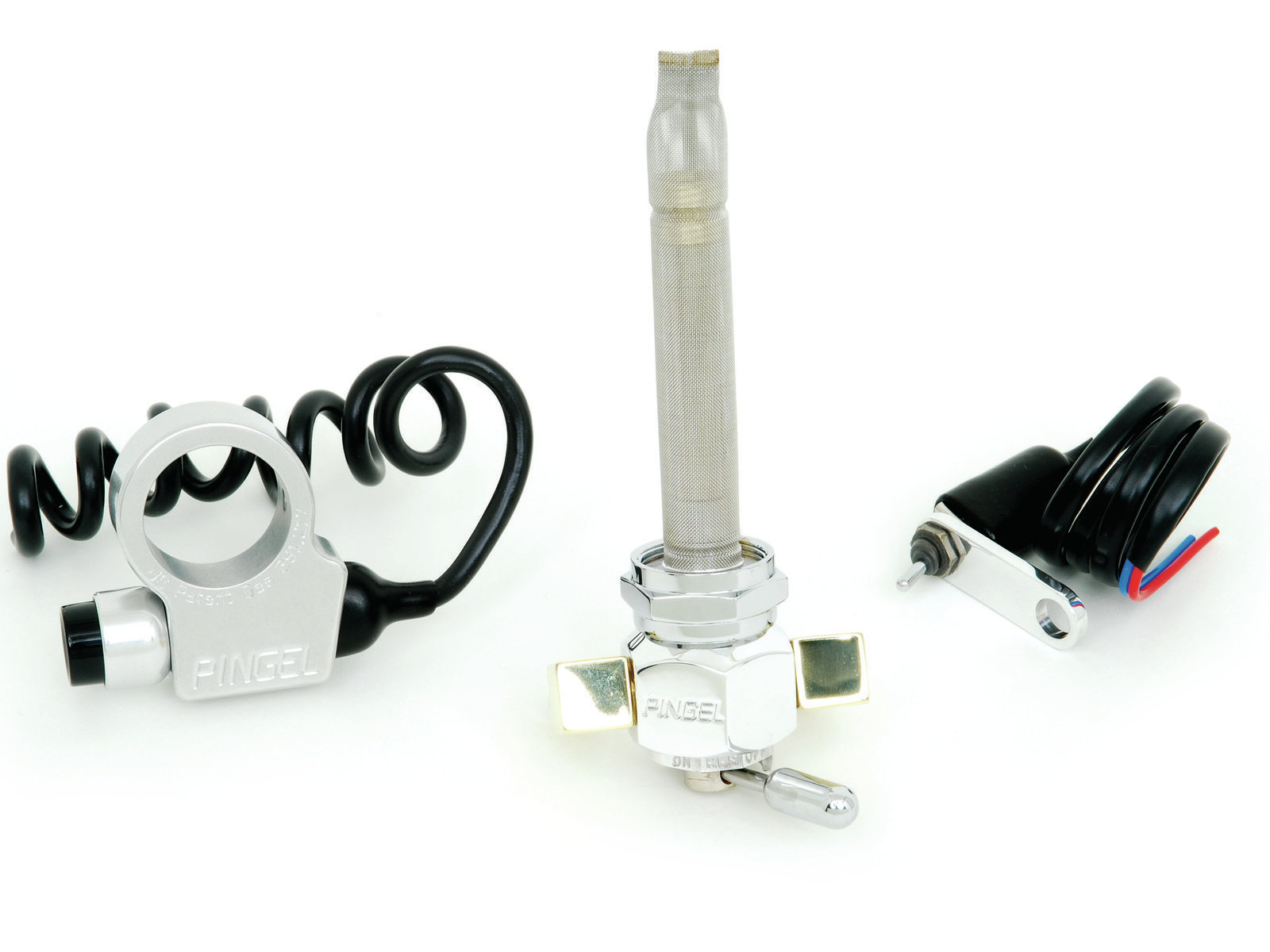
4 Pingel’s billet 1-inch handlebar spray button, dual outlet fuel valve that flows more than 90 ounces per minute, and (much prettier) arming toggle switch that replaces the one from NX.
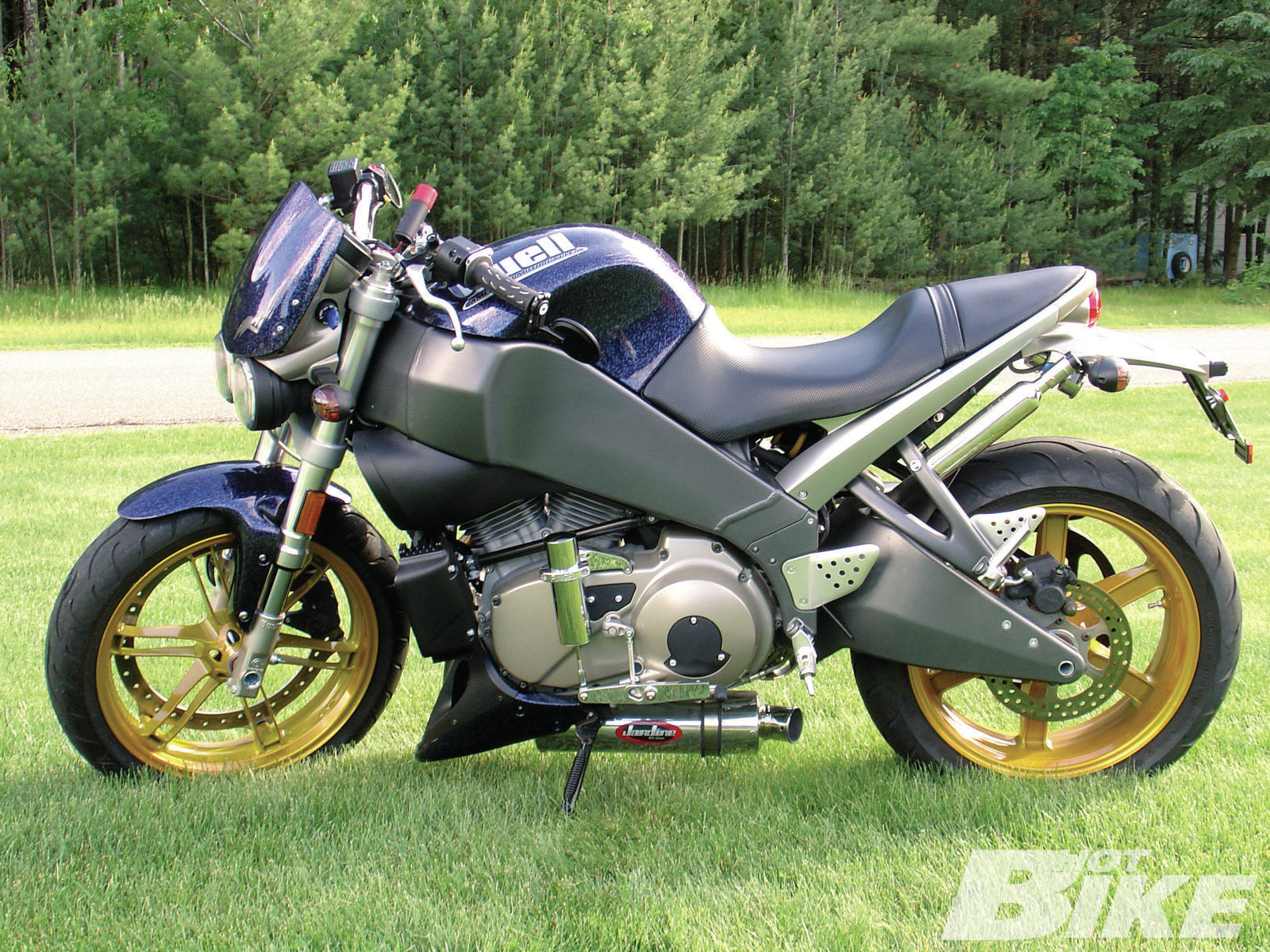
5 This is Pingel’s main tech guru Troy Winters’ old Buell that had one of the company’s nitrous kits installed—notice the go-go bottle nestled into the rear of the bike just under the seat. Take note that Troy’s Buell was also equipped with one of Pingel’s Electric Speed Shifter Kits (chrome cylinder and lever bolted to the primary.)
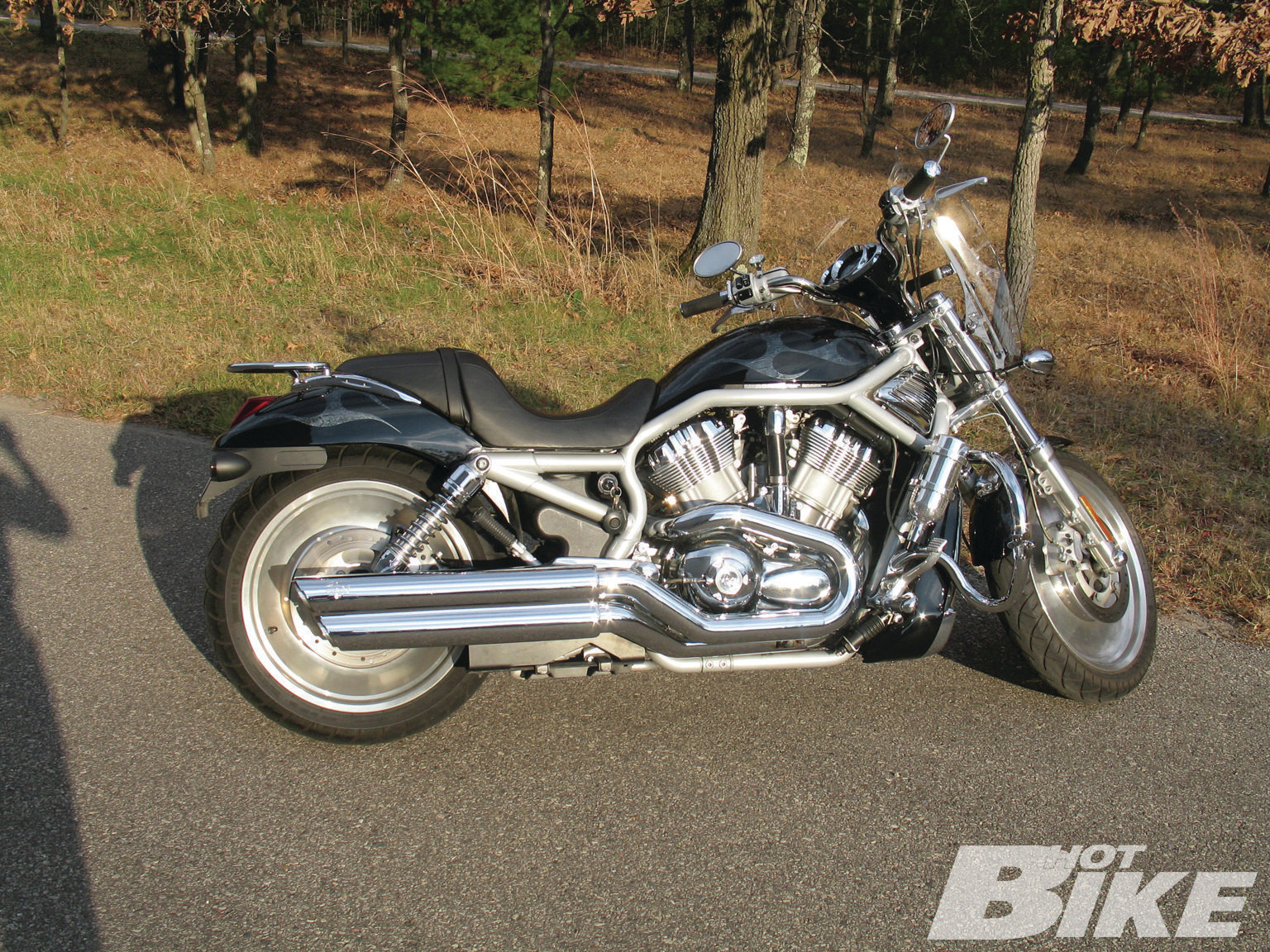
6 Here we see Donna Pingel’s 2003 V-Rod with a 1-pound, polished nitrous bottle bolted to the right side downtube. With its nitrous kit installed on the V-Rod, the bike picked up 35 hp and 42 lb-ft of torque for a total of 142 hp and 116 lb-ft of peak torque. In a future issue coming soon, we’ll bring you part two of this article concentrating on the installation and revealing the dyno results we achieved while at Anaheim-Fullerton H-D.
Adding power to a naturally aspirated American V-twin is not cheap. Big bore bolt-on kits, head work, and cams can add up, and if all the work isn’t performed at the same time, the labor could cost you a small fortune. What if a person could keep their bike’s stock qualities and still have the ability to add 35 percent more horsepower at the touch of a button? Believe it or not, it’s more than possible with a “wet” nitrous system. Of course, we know where you can get one, too: Pingel Enterprise Inc. has a universal bolt-on kit that is far more affordable than any other power adder no matter how you look at it.
How does nitrous work? The proper terminology for nitrous/laughing gas is Nitrous Oxide or N2O (nitrogen + oxygen). We won’t get into the exact chemistry here, but basically, nitrous has approximately double the amount of oxygen than an equivalent amount of air, and therefore increases the potential energy in the finite area of the combustion chamber. So, what’s the difference between a “wet” or “dry” system? “Wet” simply implies that the nitrous oxide fed into the motor is supplemented with the correct amount of extra fuel. A “dry” nitrous system means that the nitrous is injected into the motor without any additional fuel, using the factory fuel system for enrichment. Most racers agree that the “wet” system is far more versatile and safer because a proper air/fuel ratio can be maintained while using nitrous. Otherwise, extensive damage can occur if the fuel mixture is too lean, while power may be lost if the mixture is too rich. “Dry” systems rely on a stock computer’s sensing ability to administer the correct amount of extra fuel; this is dangerous because most stock computers were not designed to compensate for a nitrous system.
There are other ways to make power, such as forcing additional air into the chamber with a supercharger or turbo charger, but none can do it for such little money, so little effort, and without taking power from the motor before adding it. We picked up a kit from Pingel for an upcoming install on a 2002 S&S-powered; Evo/Softail-style bike and the kit was only $1,196 where most turbo and Supercharger kits start at $3,000 and usually end up costing around $5,000 or more, plus labor. Extra belts and gears running off the crankshaft are necessary to power a supercharger, and a new, specific exhaust system is required for a turbo—the only part that has to be modified for a nitrous kit is the motor’s stock intake manifold (and the two nozzle holes can be plugged if the system is removed). Additionally, nitrous is the least intrusive of the three because the primary drive doesn’t need to be fiddled with, and the biggest parts of the system are the bottles (which can be small, like the 10-ouncers shown in this article). Lastly, nitrous is the only one of the three that is used only when you need it most and doesn’t rob the motor of power in order to work: superchargers create parasitic drag from on the crankshaft; while turbos create extra backpressure in an exhaust system. Nitrous is only used when the button is pushed, so a bike can be kept in an economical OEM state when not racing; turbos and superchargers can’t be turned on and off. Nitrous is basically a chemical-derived supercharger that costs a fraction of the price of other power adders, which allows the user to choose when to use it. The only real drawback is that the tanks are hard to keep full because you’ll want to use it all the time (which is why we ordered dual 10-ounce tanks)!
Pingel’s nitrous kits and components have been sold through the company since the early ’90s; meaning it’s comfortable with its products. Many of the company’s employees, such as technical wizard Troy Winters, had one on his old Buell (and now has the kit on a Hayabusa), and Donna Pingel’s (co-owner of Pingel) V-Rod has one installed on it, too. Pingel also sponsors a number of racers in the motorcycle world, in both H-D and metric arenas. These facts should relay a strong message to potential buyers: not only does Pingel understand the product it’s selling you, but it’s also had intimate experience with installing and using it and is therefore better able to help with an installation and answer any nitrous-related questions one might encounter before obtaining one of these kits.
We liked what a nitrous system could do and wanted to test Pingel/Nitrous Express’ universal H-D kit for ourselves. But first, we’ll describe the components included in the kit in this article, then in part two we will cover the installation and the before-and-after dyno results..** HB**
Source:
Pingel Enterprises
pingelonline.com | (608) 339-7999


